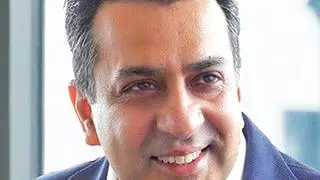When Bengaluru-based Srikanta Bedathur started his PhD at the Indian Institute of Science, he only dreamed of doing cutting-edge research, and the best place for that was the Max-Planck Institute of Informatics in Saarbruecken, Germany.
However, after spending six years there and during discussions with his friends in India, Bedanthur realised that opportunities in India for a researcher are a lot better than what’s available in the West.
Today, he’s back in his hometown and working at a research organisation that's giving him the same facilities that he got in Germany but with many more interesting things to do.
“It is far more exciting to work on solving a problem here in India (and coming up with a solution) that can impact millions of people rather than sit in the US or Germany and work on something that'll have some impact maybe in 10 years or so,” said Bedathur. He's now working on solving multilingual issues for cognitive computing at IBM India Research lab, which will help the company analyse text in Indian languages more effectively.
“The kind of things they wanted in Germany was like ‘get me a solution to this’. They already had a defined problem, they already had a set framework. In India, there is no solution, there is no framework,” he said, pointing out that lack of a framework is perhaps a great thing for India as it lets researchers use their grey matter well.
Bedathur is not alone. There are hundreds of researchers who are leaving their lucrative jobs in the US and Europe to work for global R&D firms that are increasing their footprint in India. For example, about half of the researchers at IBM’s India Research Lab have come back after working in the West.
While the Make-in-India initiative is making a lot of noise in the manufacturing sector, global companies have realised that India is the next frontier for high-tech research and are coming here — and not for cheap talent, considering most of these researchers get paid at par with global standards. This shift of R&D focus to India is turning the country into an R&D hub after being known as the back-office of the world for decades.
More patents “IBM India Research Lab is as big as the first-generation labs in the US both in terms of size as well as the quality of work,” said Sriram Raghavan, Director IBM Research-India, explaining the importance of India operations for IBM. “Hundreds of patents and hundreds of scientific publications come from the lab every year,” he said.
Cisco, another large R&D organisation in India, is investing $1.7 billion a year in India, largely into its 5,000-member strong R&D team in Bengaluru.
At Cisco’s R&D facility in Bengaluru, you can find not only Indians but a large number of foreign recruits. In fact, of the 80 engineering directors at Cisco India, about 50 joined from large research organisations in the US and Europe to come and solve problems in India. These researchers are not just helping their peers in other countries build products but are also building products and solutions right from scratch for the global market. And this trend is not just restricted to large MNCs. Close to 5 lakh engineers currently work at hundreds of tech R&D firms in India that have mushroomed in the last five years, delivering as much as $22 billion worth of work in 2015-16, according to Nasscom data.
By 2020, Nasscom predicts this number will almost double to $40 billion. That's still a far cry from the over $100 billion software industry in India but the growth is twice as fast, especially with research jobs paying almost at par with US salaries and the kind of facilities that some of the best research firms around the world offer.
Key challenge With this massive growth of research work in India, talent crunch is becoming a big problem for some multinationals in Bengaluru. To overcome this, they are hiring not just from Indian colleges but also from the top global universities and research firms in the West.
But when it comes to facilities, the need of researchers is far more complex than just the want for fancy buildings and free food. Companies, therefore, are taking every measure to retain this coveted talent and also attract the best of minds.
“We run a programme at our research lab in Bengaluru where researchers here get to work with senior global researchers for six months on a very specific problem that Cisco is trying to solve for the market. They (Indian researchers) get exposed to the cutting-edge work as well as get to build a network of the peer level technical community across the globe. That gives them tremendous opportunity to expand their career,” said Amit Phadnis, President, Engineering, and India Site Leader for Cisco.
The efforts have resulted in two patents a week from Cisco India labs, contributing to about 9 per cent of all patents filed by Cisco globally.
Software major Adobe is also taking several measures to ensure enough talent for its ever-expanding India R&D centre.
“While India is one of the world’s strongest contenders when it comes to PhD talent, we feel that the number of students is comparatively small. To address this, we at Adobe are trying to further build the ecosystem by encouraging R&D talent in India through tie-ups with premier institutes, internship, funding support for attending premier conferences etc., and more,” said Shriram Revankar, V-P & Fellow, Adobe Research Big Data Experience Lab.
Revankar himself worked at Xerox in the US for over a decade before deciding to come to India and work. Today, he's a fellow at Adobe, which is the highest position for a researcher and at par with a C-suite executive.








Comments
Comments have to be in English, and in full sentences. They cannot be abusive or personal. Please abide by our community guidelines for posting your comments.
We have migrated to a new commenting platform. If you are already a registered user of TheHindu Businessline and logged in, you may continue to engage with our articles. If you do not have an account please register and login to post comments. Users can access their older comments by logging into their accounts on Vuukle.